12 of the best beaches in Brazil for surfing and sunbathing
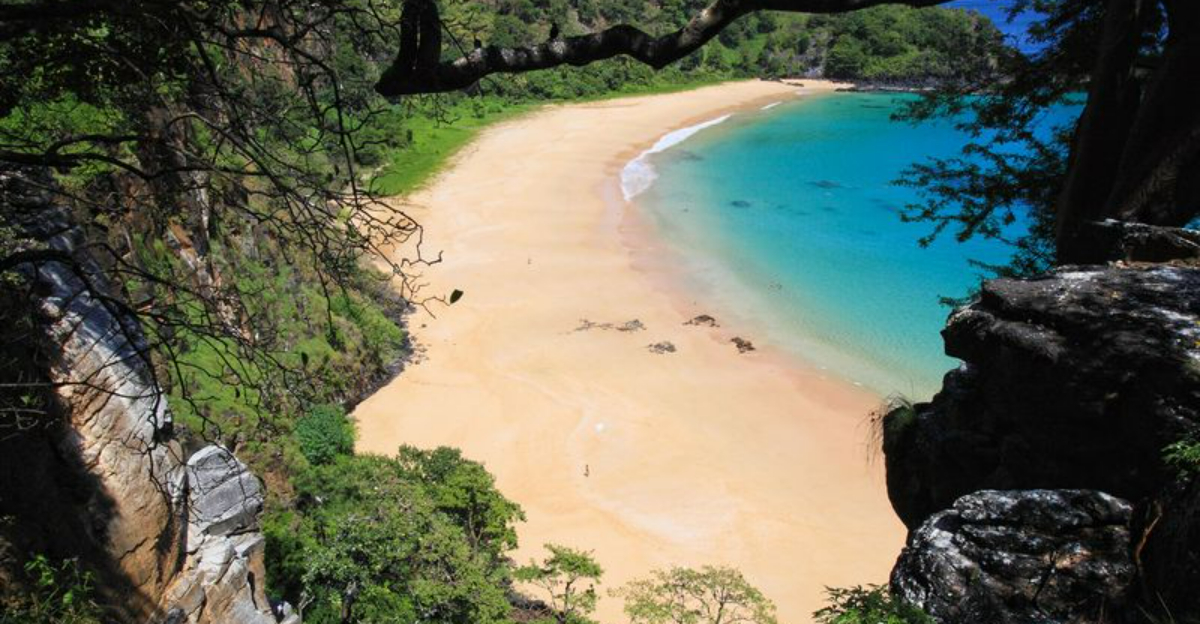
Brazil’s coastline stretches over 4,500 miles, offering some of the world’s most stunning beaches. From the wild waves that attract surfers to the golden sands perfect for sunbathing, Brazil has something for every beach lover.
Whether you’re looking to catch the perfect wave or simply relax under the tropical sun, these 12 beaches showcase the best of Brazil’s coastal paradise.
1. Praia do Rosa, Santa Catarina
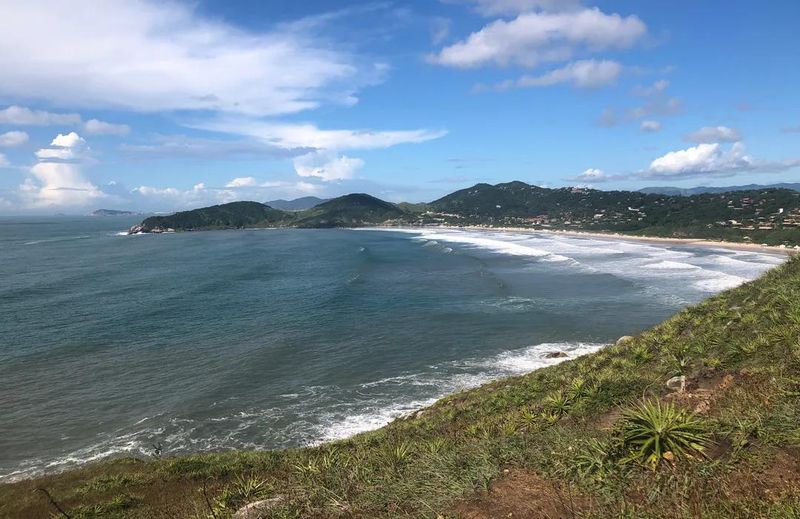
Hidden between rolling hills in southern Brazil, this horseshoe-shaped beach offers perfect waves for surfers of all levels. The bay creates different wave conditions throughout the year, making it a year-round destination for wave riders.
During summer months, the beach transforms into a sunbather’s paradise with warm waters and golden sands stretching as far as the eye can see. Local restaurants serve fresh seafood right on the sand.
What makes Praia do Rosa truly special is its commitment to eco-tourism and preservation of natural beauty. You might even spot southern right whales from the shore between July and November!
2. Copacabana, Rio de Janeiro
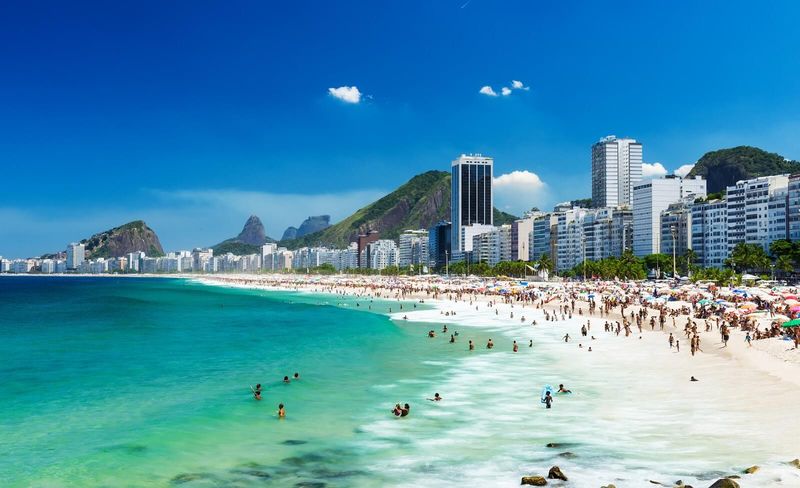
Perhaps the most famous stretch of sand in the world, Copacabana delivers an authentic Brazilian beach experience right in the heart of Rio. The 2.5-mile crescent of white sand buzzes with energy from sunrise to well past sunset.
Morning hours attract serious surfers catching waves before the crowds arrive. By midday, the beach transforms into a vibrant playground where locals and tourists mingle under colorful umbrellas.
Along the iconic black and white mosaic promenade, vendors sell everything from coconut water to caipirinhas. When the surf isn’t ideal, beach volleyball and footvolley (a uniquely Brazilian mix of soccer and volleyball) keep the action going.
3. Praia do Futuro, Fortaleza
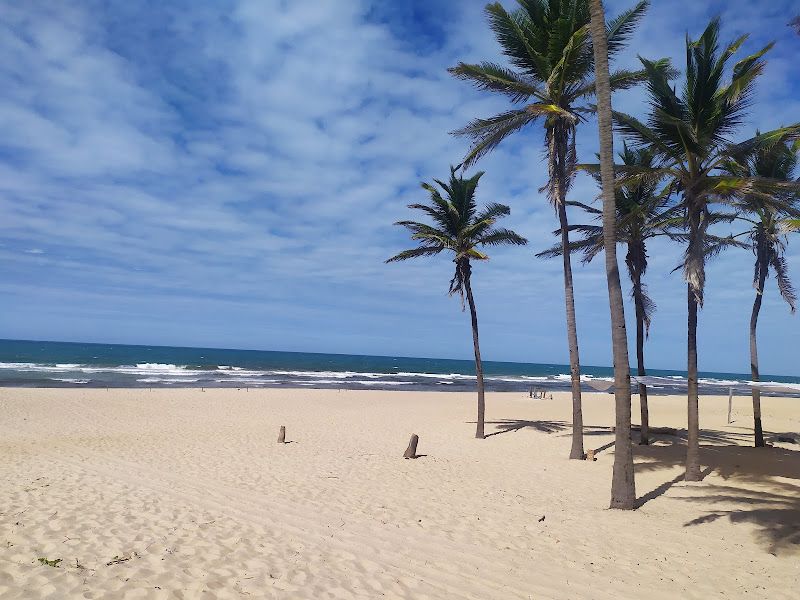
Feeling the warm breeze while watching surfers tackle consistent waves is just the beginning of what makes Praia do Futuro special. Located in northeastern Brazil, this 5-mile stretch of golden sand offers perfect conditions for both beginners and experienced wave riders.
After catching waves, everyone heads to the famous beachside restaurants called “barracas” that serve mouthwatering seafood dishes. Try the local specialty – crab prepared in various delicious ways – while your feet sink into the sand.
Unlike many Brazilian beaches, Praia do Futuro never feels overcrowded, even during peak season. The wide shoreline provides ample space for sunbathers to spread out and enjoy the tropical sunshine.
4. Fernando de Noronha, Pernambuco
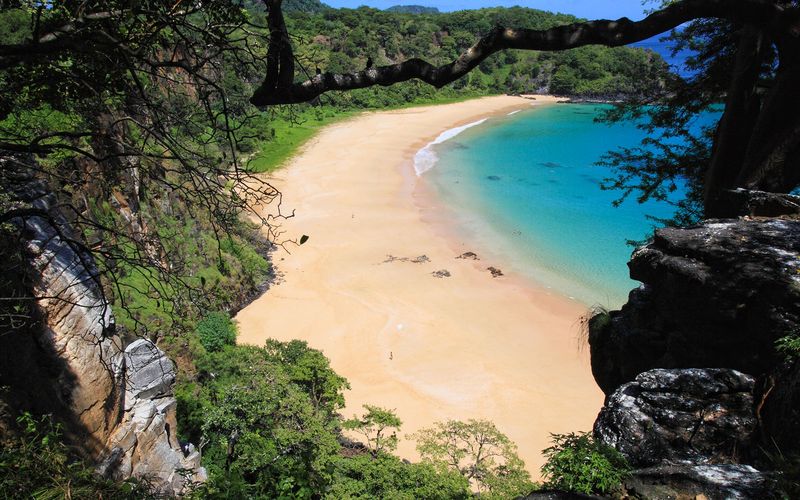
Just getting to this remote archipelago requires effort – and that’s exactly what keeps it pristine. Limited to 500 visitors daily, Fernando de Noronha’s beaches offer an exclusive experience unlike anywhere else in Brazil.
Baía do Sancho consistently ranks among the world’s best beaches with its crystal-clear turquoise waters perfect for both surfing and sunbathing. Reaching it requires descending a ladder through a rock crevice, but the reward is worth every step.
Marine life thrives in the protected waters surrounding the islands. Between surf sessions, snorkel alongside sea turtles, rays, and colorful fish that swim right up to the shore – an experience that makes the environmental preservation fee every visitor pays seem like a bargain.
5. Praia da Joaquina, Florianópolis
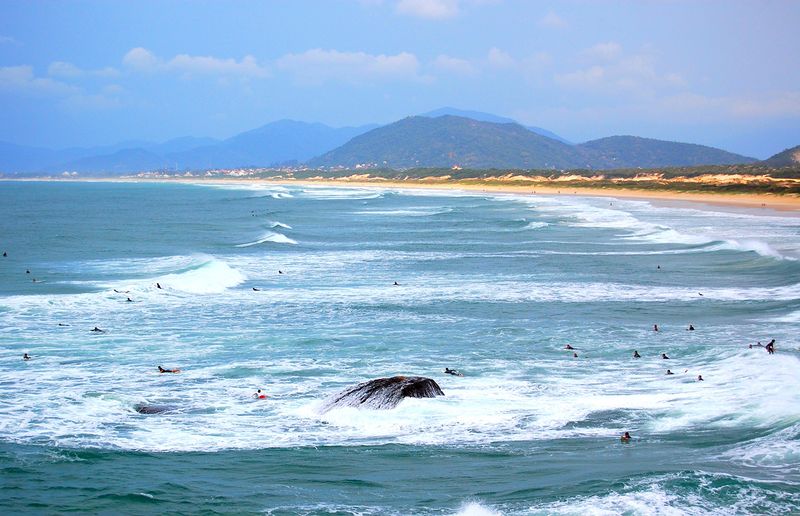
Known for hosting international surfing competitions, Joaquina Beach has earned its reputation as one of Brazil’s premier surf spots. Powerful waves break consistently thanks to the beach’s open-ocean exposure, making it a magnet for serious surfers.
Away from the water, enormous sand dunes create a playground for sandboarders and those seeking panoramic views. Renting a board and sliding down these natural formations offers an exhilarating alternative when you need a break from the waves.
As evening approaches, beachgoers gather to watch spectacular sunsets paint the sky in vibrant colors. Several surf schools operate here, making it an ideal spot to learn if you’re new to the sport but eager to catch your first wave.
6. Porto de Galinhas, Pernambuco
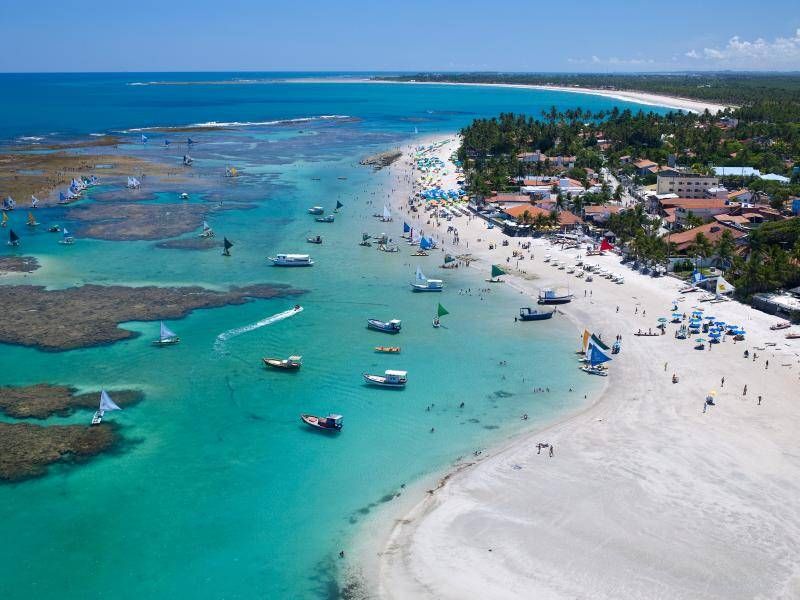
Voted Brazil’s best beach multiple times, Porto de Galinhas offers a perfect balance of surf and relaxation. When the tide recedes, natural pools form among coral reefs, creating transparent aquariums where colorful fish swim between your feet.
For surfers, the outer breaks provide consistent waves year-round, with the best conditions from September to March. Local instructors offer lessons for beginners eager to stand up on their first board.
Don’t miss exploring the beach on a traditional jangada (wooden raft) with a local fisherman as your guide. The name “Port of Chickens” comes from colonial times when smugglers would announce shipments of enslaved people with the code phrase “new chickens have arrived” – a sobering historical footnote to this now-idyllic destination.
7. Itacoatiara, Niterói
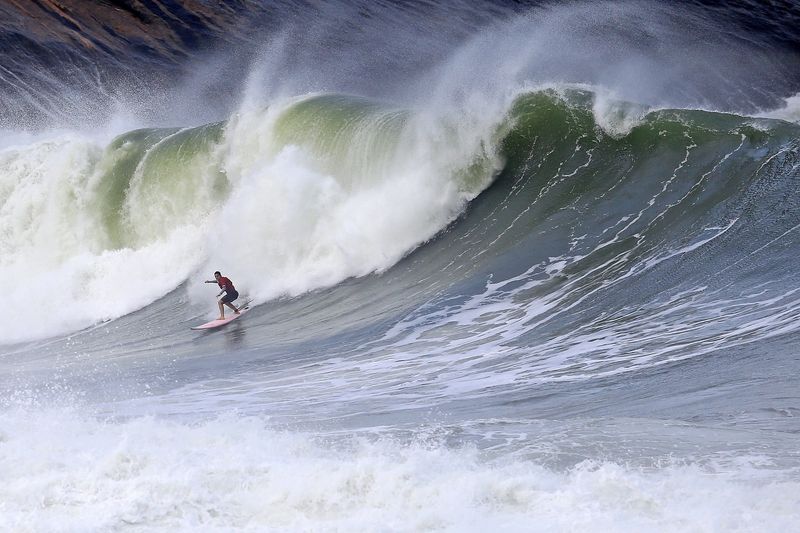
Just across the bay from Rio lies a surfer’s dream that locals try to keep secret. Itacoatiara’s powerful tubular waves have made it legendary among serious wave riders, hosting professional competitions that draw top talent from around the world.
Surrounded by mountains and Atlantic rainforest, the beach’s natural setting makes it equally appealing to nature lovers and sunbathers. Massive granite boulders frame the shoreline, creating picture-perfect spots for relaxation between surf sessions.
Unlike Rio’s more famous beaches, Itacoatiara maintains a laid-back vibe with a strong local community feel. After riding waves, cool down with açaí bowls from beachside vendors who’ve been serving the same families for generations.
8. Jericoacoara, Ceará
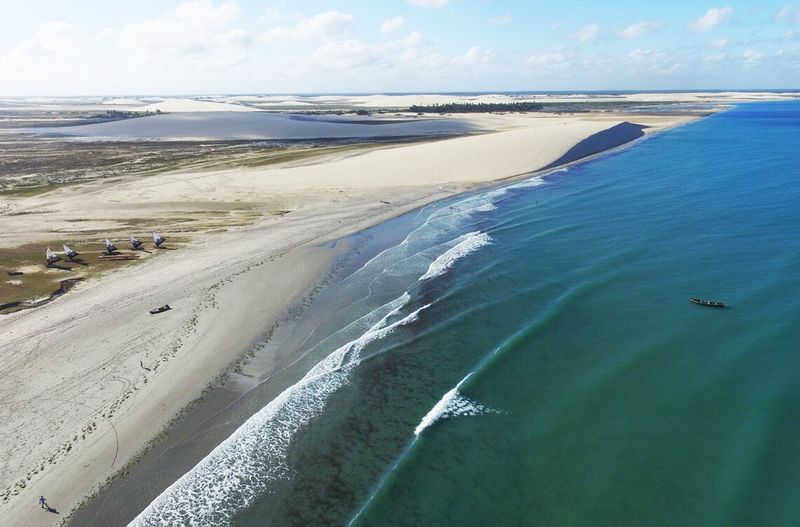
Once a sleepy fishing village, “Jeri” has transformed into a windsurfing and kitesurfing paradise while maintaining its car-free, sandy-street charm. Getting here requires a journey through sand dunes by 4×4, keeping mass tourism at bay.
Consistent trade winds from July to January create ideal conditions for wind sports, while the main beach offers gentler waves perfect for learning traditional surfing. As the day winds down, everyone gathers on the massive dune overlooking the beach to watch the sun sink into the ocean.
Street performers, artists, and musicians give the village a bohemian atmosphere after dark. Despite its growing popularity, strict environmental regulations prevent large-scale development, preserving the natural beauty that made Jericoacoara special in the first place.
9. Praia Mole, Florianópolis
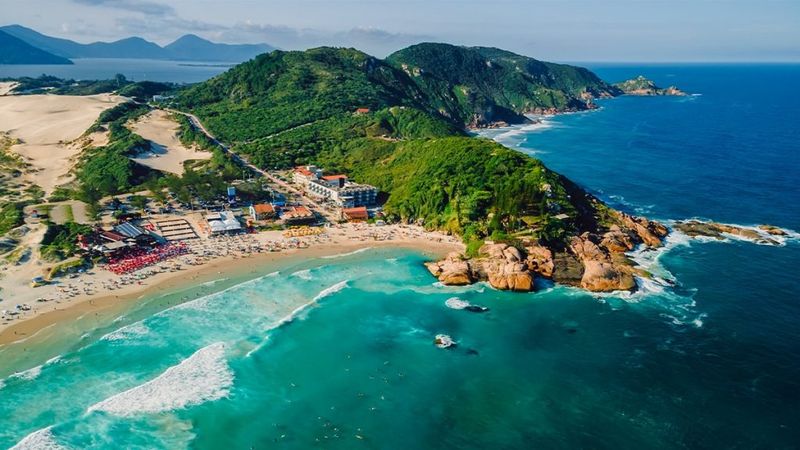
Nestled between two forested hills, Praia Mole (Soft Beach) earned its name from the fine, powdery sand that feels like velvet between your toes. The open-ocean exposure creates consistent waves that break both left and right, catering to surfers of all stances.
January and February bring Brazil’s beautiful people to sunbathe and see-and-be-seen at beach clubs that pump electronic music into the afternoon air. During winter months (June-August), the crowd thins but the surf improves dramatically with larger, more powerful swells.
Hiking trails lead from both ends of the beach to spectacular viewpoints and neighboring coves. After an active day, refuel at one of the rustic restaurants serving fresh seafood and açaí bowls right on the sand.
10. Pipa Beach, Rio Grande do Norte
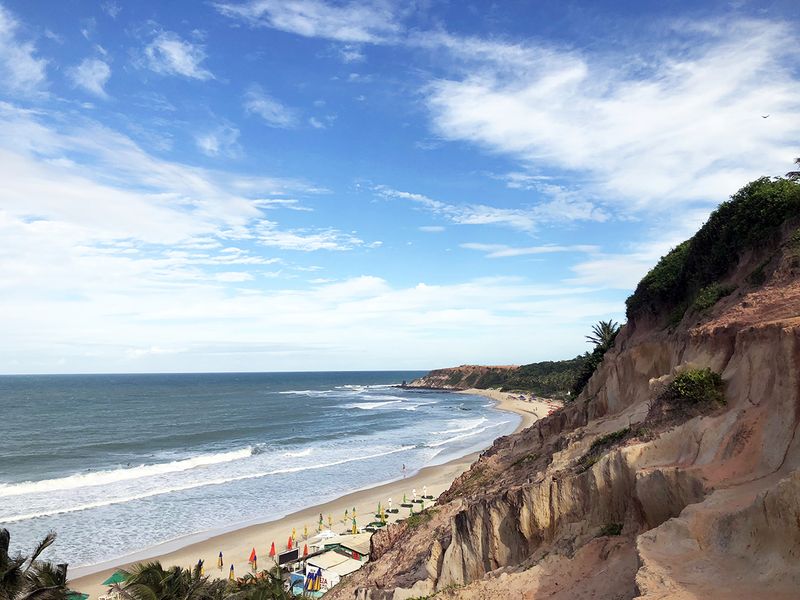
Dramatic red cliffs provide a stunning backdrop to this northeastern gem where dolphins frequently play close to shore. The main beach offers gentle waves perfect for beginning surfers, while nearby Madeiro Beach delivers more challenging breaks for experienced wave riders.
Between surf sessions, explore the ecological sanctuary that surrounds Pipa. Sea turtles nest on these shores, and the protected Atlantic rainforest is home to marmoset monkeys that sometimes venture down to visit beachgoers.
Originally discovered by surfers in the 1970s, Pipa has evolved into a sophisticated beach town with international restaurants and boutique shops lining cobblestone streets. Despite development, strict environmental laws have preserved the natural beauty that drew the first wave-seekers decades ago.
11. Maresias, São Paulo
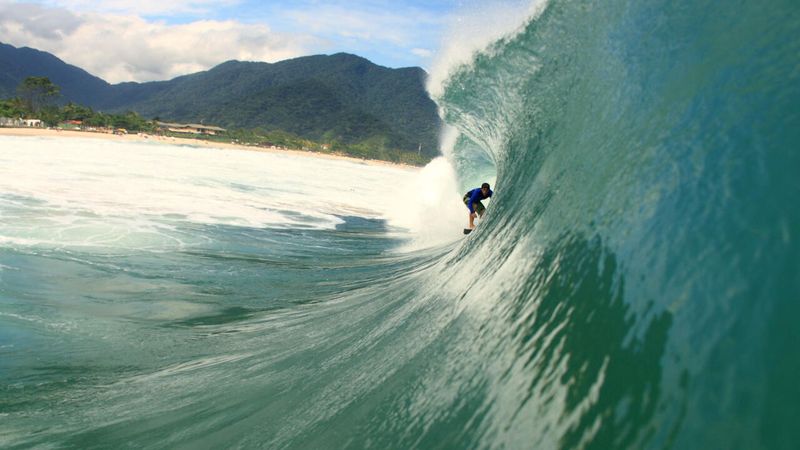
Just two hours from South America’s largest city lies a beach that has produced world-class surfers including Gabriel Medina, Brazil’s first world champion. Maresias offers consistent waves year-round with the best conditions during fall and winter months (March-August).
Beyond surfing, the beach transforms into a lively party destination on weekends when São Paulo residents escape the city. Beach clubs feature international DJs spinning tracks as the sun sets over the South Atlantic.
Unlike many Brazilian beaches, Maresias is bordered by lush Atlantic rainforest rather than urban development. After riding waves all day, hiking trails lead to secluded waterfalls where you can rinse off the salt water in pristine freshwater pools surrounded by tropical vegetation.
12. Praia do Forte, Bahia
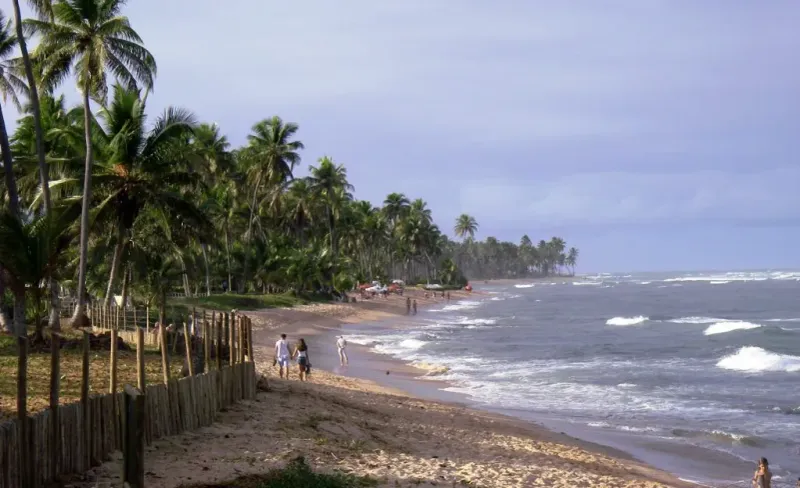
Ancient turtle conservation meets perfect waves at this charming beach town north of Salvador. Home to Project TAMAR, Brazil’s sea turtle protection program, Praia do Forte offers the unique opportunity to surf alongside these gentle creatures in their natural habitat.
The beach’s long stretch of white sand provides multiple breaks for surfers of all levels. Protected by offshore reefs, the inner sections offer gentle rollers perfect for beginners, while the outer reef creates more challenging waves for experienced surfers.
After catching waves, explore the preserved natural pools at low tide or visit the sea turtle sanctuary to learn about conservation efforts. The village itself, built around the ruins of a 16th-century Portuguese fortress, combines historical charm with modern amenities.
